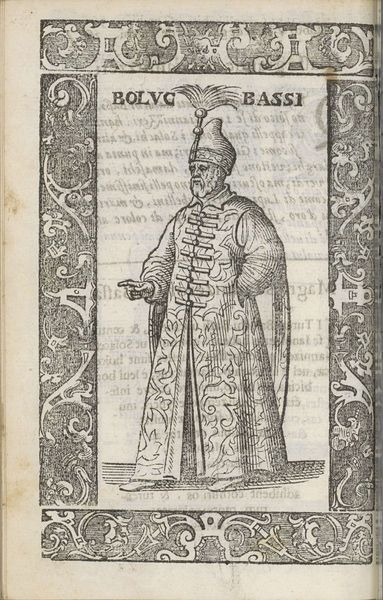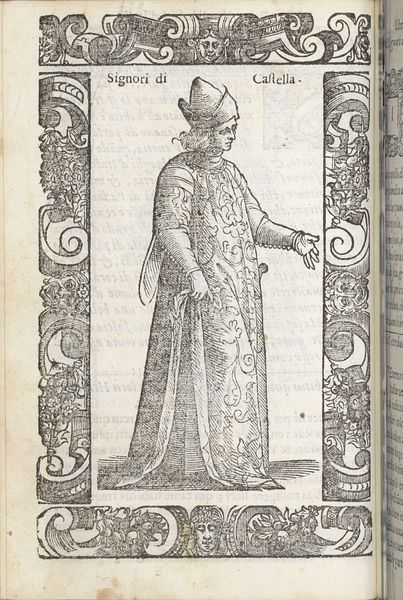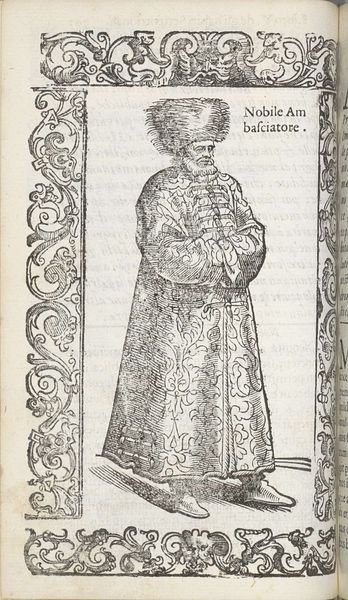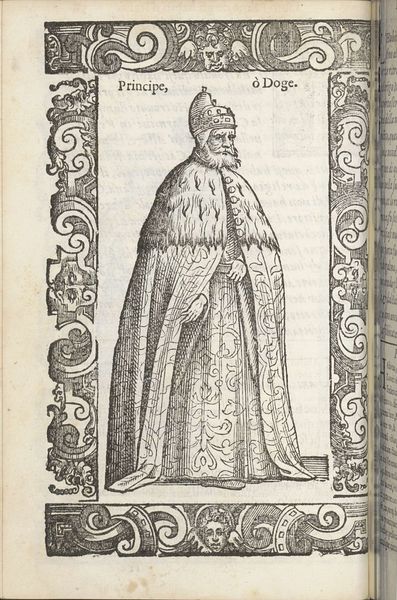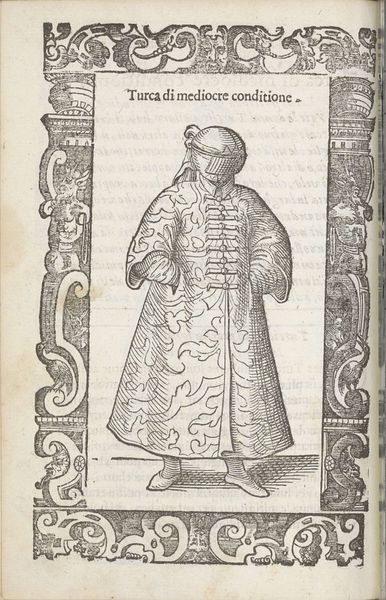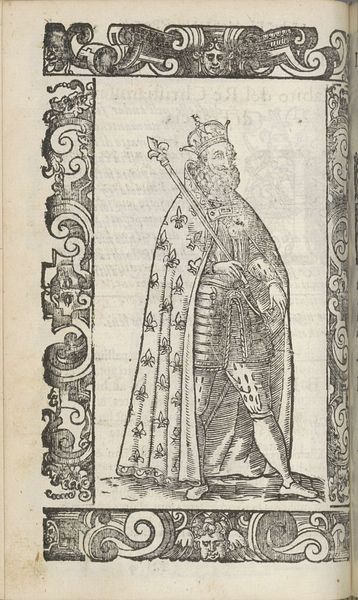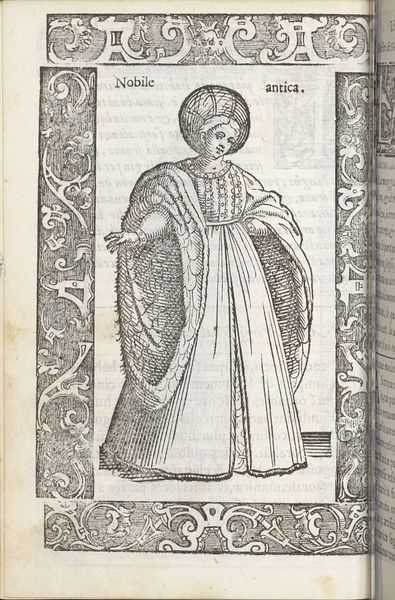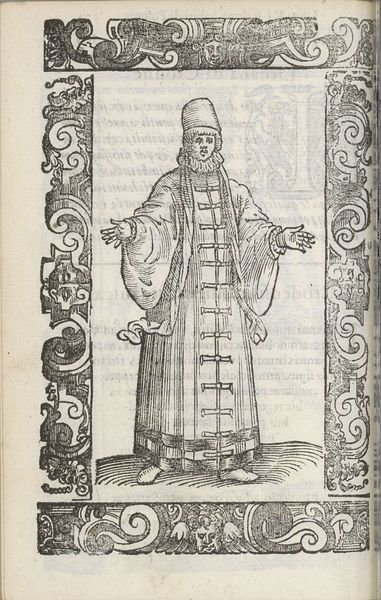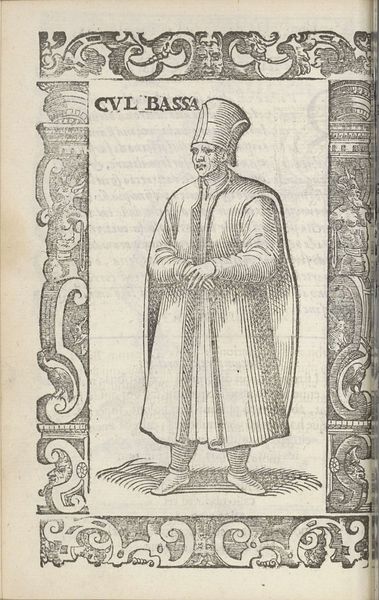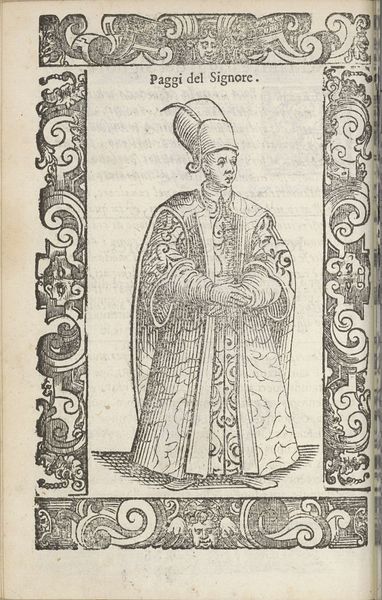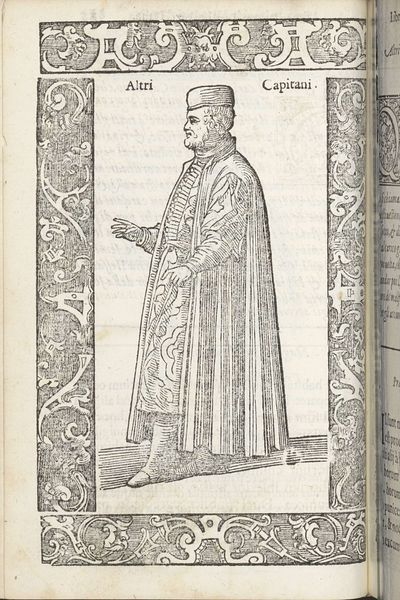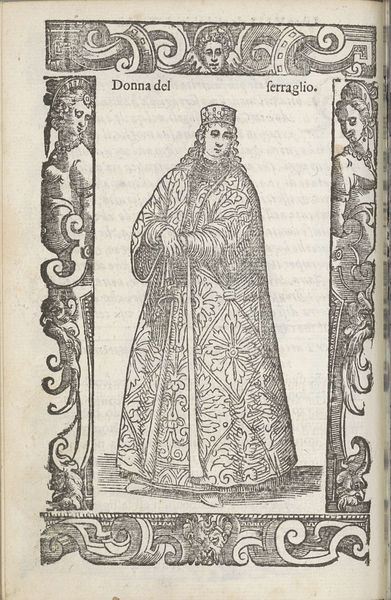
print, woodcut
#
portrait
#
pen drawing
# print
#
figuration
#
11_renaissance
#
woodcut
#
northern-renaissance
Dimensions: height 167 mm, width 125 mm
Copyright: Rijks Museum: Open Domain
Curator: So, looking at this striking figuration, we’re observing "Il gran duca di Moscovia," a Northern Renaissance portrait dating back to 1598, created by Christoph Krieger as a print. What captures your attention first? Editor: The overwhelming textile pattern, absolutely! The robes, dripping in ornamentation...it's visual overload in the best way, but also creates an inscrutable barrier between the man and us. It feels…performative. Like all the visual indicators of immense authority and a self-conscious display of wealth and dominance. Curator: It's interesting you pinpoint the performative aspect. The details in this piece speak volumes about the visual language used to convey power. Krieger uses precise lines in the woodcut to showcase the opulence associated with the Grand Duke, signaling his status through material representation, like an extension of his persona. The ornamentation almost becomes synonymous with his identity, a symbol to solidify and project it. Editor: Right! It feels almost like he’s drowning in signs of status! It gives the piece an almost oppressive aura. And what about the figures flanking the portrait? They are definitely Baroque in feel; the portrait proper seems contained by this almost frivolous setting. Curator: Indeed. You touch on a critical point. While Krieger primarily used the print medium for the dissemination of information and visual propaganda, in a way the woodcut and the composition reflect broader cultural exchanges happening at the time between Northern Europe and Russia. These aesthetic exchanges signal a complex interplay between different visual cultures in the late 16th century, negotiating tradition with evolving tastes, for instance by contrasting Renaissance naturalism in the subject and the flourish Baroque elements to decorate the image. Editor: Makes me wonder about the gaze. I'm pulled in, yet distanced. I get the overwhelming impression of constructed grandeur, it makes me wary, like a political chess move… Centuries later and that sensation hasn't faded at all! I also see an overt reference to the printed medium itself in the layout; that’s actually an interesting thing, the frame competing so much with the main character. Curator: You are correct, this interplay underscores the dual function of the portrait – as representation of power and declaration of wealth, and the artistic achievement per se in rendering such finery so realistically, a tour-de-force by Krieger in asserting his capabilities as draughtsman and the possibilities offered by the woodcut technique for diffusion. Well, our time here comes to an end… what a remarkable print. Editor: Absolutely. Each glance unravels another layer. Intrigue in ink, that's a beautiful and effective blend of power, status and control! I leave the conversation with much food for thought!
Comments
No comments
Be the first to comment and join the conversation on the ultimate creative platform.
